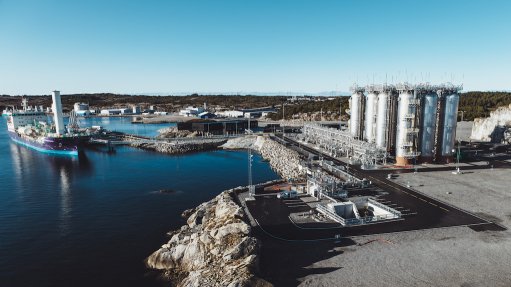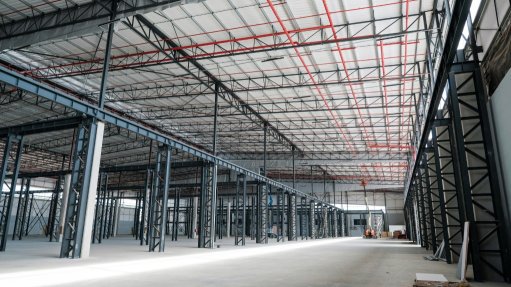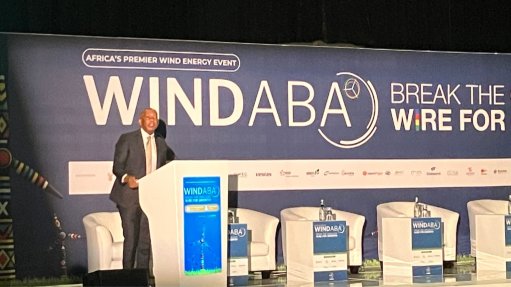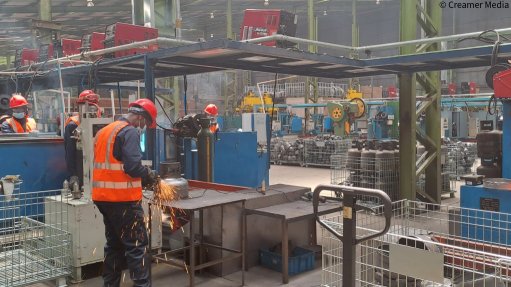Hydrogen gaining traction globally
Notable progress is being made in the global hydrogen industry of late, owing to several conducive factors coming into play at the same time, and this presents opportunities for different sectors to capitalise on.
This was noted by global pure-play sustainability consultancy ERM partner Dr David Hart, during a discussion on hydrogen and fuel cells, hosted by finance institution Nedbank on October 14.
Hart is also director at E4tech, a specialist energy and sustainability strategy consultancy acquired by ERM in 2021.
Hart outlined that the factors coalescing include significant technological advancements in the industry and the supply chain progressing, which makes investing in fuel cells and the like more feasible from a cost perspective.
Moreover, he pointed out that there had been a significant reduction in the price of renewables, with installations increasing rapidly on a global scale.
Hart expanded that, when renewables get to a certain low cost, and the electricity generated from this cannot be fed into the grid, this presents alternative options such as it being used to create cheap hydrogen in some places in the world.
Further, there is also growing awareness of the severity of the climate crisis, with the number of natural disasters being experienced recently underscoring this.
Therefore, climate resilience, energy management and preparing for a net-zero future are all becoming increasingly important at a board and government level, Hart said.
“All of these factors coming together is leading to real motivation to build capacity.”
Hart noted that green hydrogen is posited to be a solution to many of these factors alluded to, with considerable investment starting to pick up in the industry over the past five or so years, especially in electrolysers.
He said the industry was starting to see investments on a gigawatt scale, with factories and projects being announced globally, in the spheres of both production and end-use.
He acclaimed that there was about $240-billion worth of projects that have been announced which should come to fruition between now and 2030. Of these, about 50% are halfway through the design processes, while about 10% are in the final investment phase.
Hart said that while these figures were still relatively small in global energy terms, they pointed to a definite improvement from about five years prior, with real movement in the industry now, real capital being committed, and real access being achieved.
POCKETS OF DEVELOPMENT, OPPORTUNITY
Hart outlined potential in reducing emissions from heavy-duty vehicles, with hydrogen presenting a good solution for this. He said big players in the market were exploring the potential for fuel cell and hydrogen trucks, for example.
While this would take time, there was a definite uptick, Hart said.
He also outlined that shipments of fuel cells were ramping up, which would lead to supply chain cost reduction, implementation and better acceptance from government and the general public.
He also noted that the Hydrogen Council, established in 2017, was growing steadily, with it now boasting 132 members. Hart said this “huge, diverse grouping” are some of the main players that are building up capacity in the industry.
There is also considerable opportunity, especially in Europe, to make ammonia from green hydrogen and use this as a chemical feedstock, which would considerably reduce carbon emissions, Hart said.
He also mentioned that refiners were now testing the use of electrolysers and using hydrogen in their processes.
Other industrial processes exploring the potential of hydrogen included steelworks using hydrogen, instead of coking coal, as reducing agent, which reduced carbon emissions drastically.
There was also potential to create sustainable aviation fuels, with this sector being one that is very difficult to decarbonise, Hart pointed out.
He added that interest by the shipping industry in exploring green hydrogen options was also starting to pique.
Hart acknowledged that there were concerns about the efficiency of using hydrogen for electricity – given that renewable energy is used to make hydrogen, which is then converted back into electricity.
He said that, in cases where the renewable energy can be directly fed into the grid, this should be done. However, in places that are remote, or where there is no direct connection to the grid, converting renewable energy into hydrogen presents a smart option, he pointed out.
Therefore, efficiency should not be the only facet to consider, Hart said, rather, when assessing options, metrics like, price, decarbonisation, technology and location, besides others, should all be appraised.
Article Enquiry
Email Article
Save Article
To advertise email advertising@creamermedia.co.za or click here
Comments
Announcements
What's On
Subscribe to improve your user experience...
Option 1 (equivalent of R125 a month):
Receive a weekly copy of Creamer Media's Engineering News & Mining Weekly magazine
(print copy for those in South Africa and e-magazine for those outside of South Africa)
Receive daily email newsletters
Access to full search results
Access archive of magazine back copies
Access to Projects in Progress
Access to ONE Research Report of your choice in PDF format
Option 2 (equivalent of R375 a month):
All benefits from Option 1
PLUS
Access to Creamer Media's Research Channel Africa for ALL Research Reports, in PDF format, on various industrial and mining sectors
including Electricity; Water; Energy Transition; Hydrogen; Roads, Rail and Ports; Coal; Gold; Platinum; Battery Metals; etc.
Already a subscriber?
Forgotten your password?
Receive weekly copy of Creamer Media's Engineering News & Mining Weekly magazine (print copy for those in South Africa and e-magazine for those outside of South Africa)
➕
Recieve daily email newsletters
➕
Access to full search results
➕
Access archive of magazine back copies
➕
Access to Projects in Progress
➕
Access to ONE Research Report of your choice in PDF format
RESEARCH CHANNEL AFRICA
R4500 (equivalent of R375 a month)
SUBSCRIBEAll benefits from Option 1
➕
Access to Creamer Media's Research Channel Africa for ALL Research Reports on various industrial and mining sectors, in PDF format, including on:
Electricity
➕
Water
➕
Energy Transition
➕
Hydrogen
➕
Roads, Rail and Ports
➕
Coal
➕
Gold
➕
Platinum
➕
Battery Metals
➕
etc.
Receive all benefits from Option 1 or Option 2 delivered to numerous people at your company
➕
Multiple User names and Passwords for simultaneous log-ins
➕
Intranet integration access to all in your organisation


















